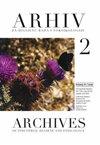Comments on "Wi-Fi technology and human health impact: a brief review of current knowledge" published in the June 2022 issue of Archives.
IF 1.6
4区 医学
Q3 PUBLIC, ENVIRONMENTAL & OCCUPATIONAL HEALTH
Arhiv Za Higijenu Rada I Toksikologiju-Archives of Industrial Hygiene and Toxicology
Pub Date : 2022-09-30
eCollection Date: 2022-09-01
DOI:10.2478/aiht-2022-73-3671
引用次数: 0
对《档案》2022年6月号发表的“Wi-Fi技术与人类健康影响:当前知识的简要回顾”的评论。
本文章由计算机程序翻译,如有差异,请以英文原文为准。
求助全文
约1分钟内获得全文
求助全文
来源期刊

Arhiv Za Higijenu Rada I Toksikologiju-Archives of Industrial Hygiene and Toxicology
PUBLIC, ENVIRONMENTAL & OCCUPATIONAL HEALTH-TOXICOLOGY
CiteScore
3.50
自引率
4.80%
发文量
26
审稿时长
6-12 weeks
期刊介绍:
Archives of Industrial Hygiene and Toxicology (abbr. Arh Hig Rada Toksikol) is a peer-reviewed biomedical scientific quarterly that publishes contributions relevant to all aspects of environmental and occupational health and toxicology.
 求助内容:
求助内容: 应助结果提醒方式:
应助结果提醒方式:


